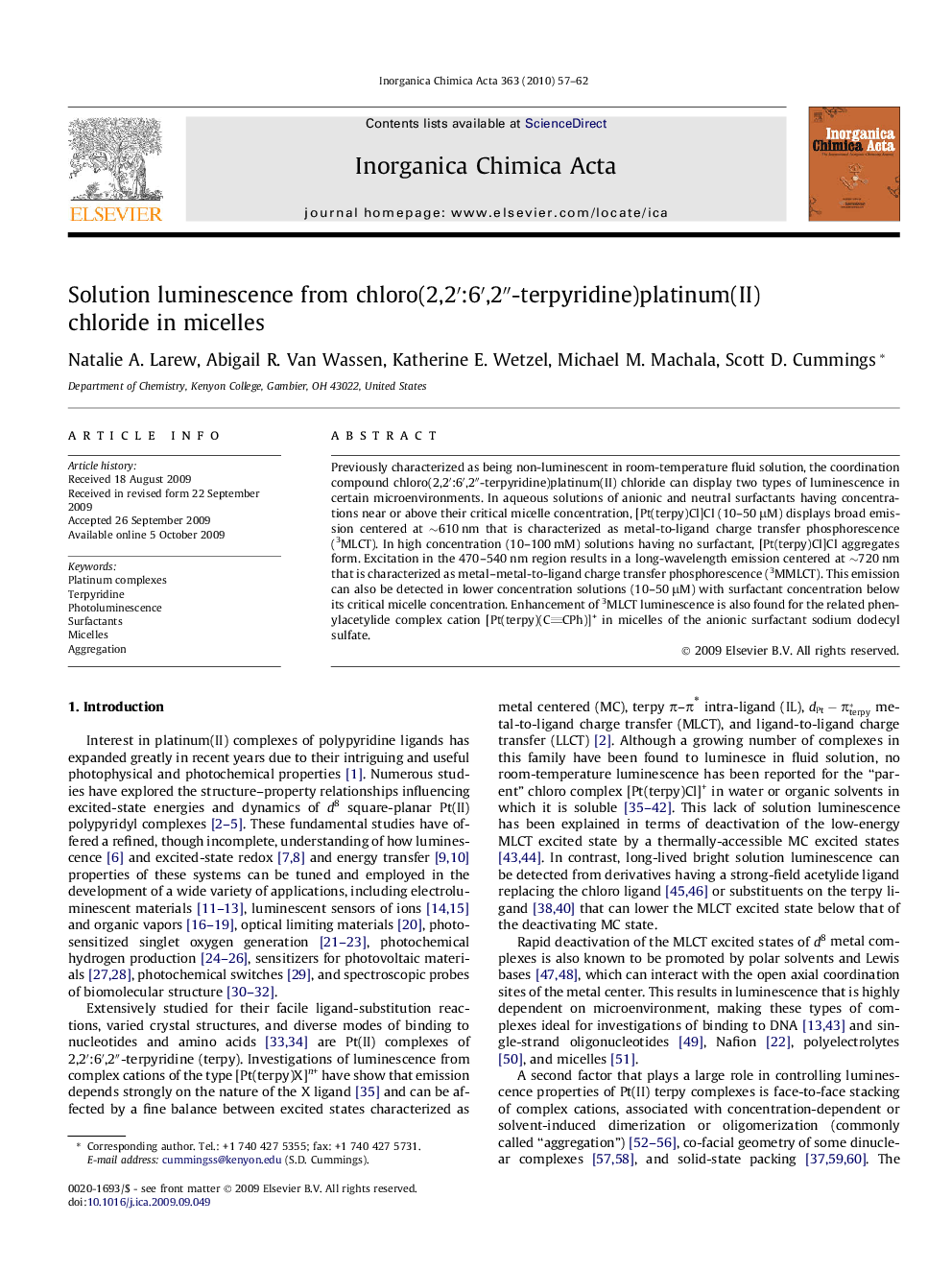| Article ID | Journal | Published Year | Pages | File Type |
|---|---|---|---|---|
| 1311297 | Inorganica Chimica Acta | 2010 | 6 Pages |
Previously characterized as being non-luminescent in room-temperature fluid solution, the coordination compound chloro(2,2′:6′,2″-terpyridine)platinum(II) chloride can display two types of luminescence in certain microenvironments. In aqueous solutions of anionic and neutral surfactants having concentrations near or above their critical micelle concentration, [Pt(terpy)Cl]Cl (10–50 μM) displays broad emission centered at ∼610 nm that is characterized as metal-to-ligand charge transfer phosphorescence (3MLCT). In high concentration (10–100 mM) solutions having no surfactant, [Pt(terpy)Cl]Cl aggregates form. Excitation in the 470–540 nm region results in a long-wavelength emission centered at ∼720 nm that is characterized as metal–metal-to-ligand charge transfer phosphorescence (3MMLCT). This emission can also be detected in lower concentration solutions (10–50 μM) with surfactant concentration below its critical micelle concentration. Enhancement of 3MLCT luminescence is also found for the related phenylacetylide complex cation [Pt(terpy)(CCPh)]+ in micelles of the anionic surfactant sodium dodecyl sulfate.
Graphical abstractPhotoluminescence of 10 μM [Pt(terpy)Cl]Cl in an aqueous solution of 20 mM sodium dodecyl sulfate.Figure optionsDownload full-size imageDownload as PowerPoint slide
